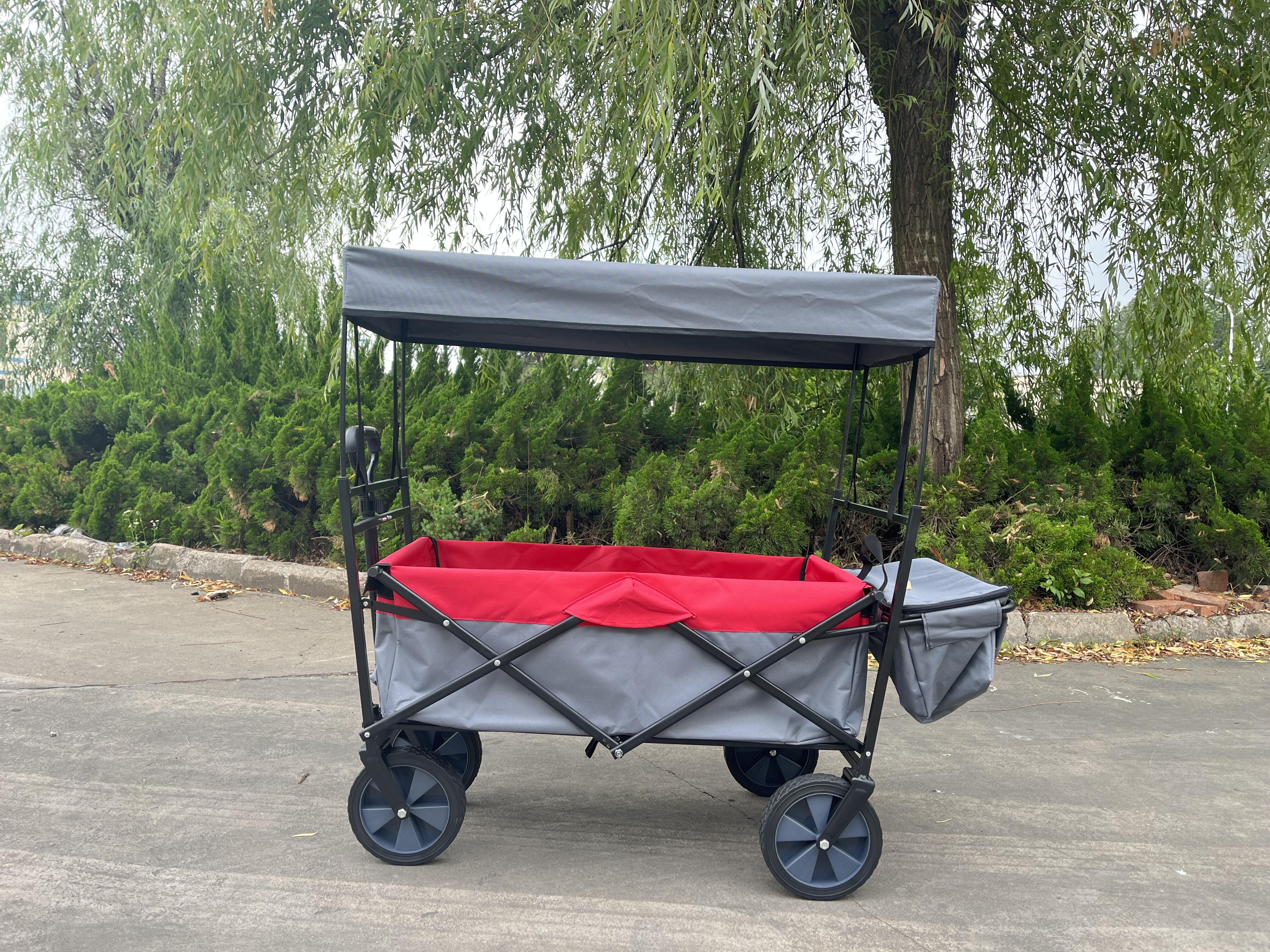Transforming Outdoor Retail Logistics Through Innovation
The outdoor retail industry faces ongoing challenges with shipping costs, particularly when dealing with bulky camping equipment. Lightweight camping wagons have emerged as a game-changing solution that's revolutionizing how outdoor retailers manage their outbound logistics. These innovative products not only provide value to end customers but also present a compelling opportunity for retailers to optimize their shipping operations and reduce costs significantly.
As e-commerce continues to dominate the outdoor retail landscape, finding ways to minimize shipping expenses while maintaining product quality has become paramount. The introduction of lightweight camping wagons into product lineups is proving to be more than just a consumer convenience—it's becoming a strategic advantage in managing operational costs.
The Economics of Outdoor Equipment Shipping
Traditional Shipping Challenges
Outdoor retailers have historically struggled with the high costs associated with shipping camping equipment. Traditional wagons and carts, often weighing 30-40 pounds each, consume significant shipping resources. These heavy items not only increase fuel consumption during transport but also require more protective packaging material, leading to higher overall shipping costs.
The dimensional weight pricing model used by most carriers particularly impacts outdoor retailers, as bulky items often incur charges based on size rather than actual weight. This pricing structure has traditionally forced retailers to absorb substantial shipping costs or pass them on to customers, potentially affecting competitiveness.
The Cost-Benefit Analysis
When retailers switch to lightweight camping wagons, they typically see a 40-60% reduction in shipping weight per unit. This translates to immediate savings on fuel surcharges and base shipping rates. The reduced weight also means more units can be transported in a single shipment, optimizing cargo space and reducing the number of necessary deliveries.
The financial impact extends beyond direct shipping costs. Lighter packages require less handling effort, reducing labor costs in warehouses and distribution centers. Additionally, the risk of shipping damage decreases with lighter items, leading to fewer returns and replacement shipments.

Design Innovations in Modern Camping Wagons
Material Science Breakthroughs
Recent advances in material science have enabled the development of lightweight camping wagons that maintain durability while significantly reducing weight. High-strength aluminum alloys, reinforced polymers, and advanced composite materials now replace traditional steel components, offering superior strength-to-weight ratios.
These innovative materials allow manufacturers to create wagons that weigh as little as 15 pounds while supporting loads up to 150 pounds. This revolutionary design approach maintains structural integrity while dramatically reducing shipping weight and associated costs.
Collapsible Engineering Solutions
Modern lightweight camping wagons incorporate sophisticated folding mechanisms that allow for compact storage and shipping. These design innovations enable retailers to ship more units in the same space, effectively reducing per-unit shipping costs. Some models can collapse to just 20% of their deployed size, maximizing shipping efficiency without compromising functionality.
The engineering focus on collapsible designs also benefits end-users, who can easily store and transport their wagons. This consumer advantage has led to increased market demand, helping retailers offset any initial investment in inventory transition.
Implementation Strategies for Retailers
Inventory Transition Planning
Successful implementation of lightweight camping wagons requires careful planning and execution. Retailers should consider a phased approach, gradually introducing lightweight models while maintaining some traditional inventory to meet diverse customer preferences. This strategy allows for proper market testing and customer feedback collection.
Many retailers begin by offering lightweight camping wagons as premium alternatives, eventually expanding their lightweight inventory as customer acceptance grows. This approach helps manage inventory costs while building market awareness.
Logistics Optimization
To maximize the benefits of lightweight camping wagons, retailers must optimize their entire logistics chain. This includes redesigning warehouse layouts, updating handling procedures, and retraining staff on new packaging requirements. The reduced weight and bulk of these products often allow for more efficient use of storage space and simplified picking processes.
Retailers should also negotiate with shipping carriers to ensure their rate structures reflect the reduced weight and volume of their shipments. Many carriers offer incentives for consistent lightweight shipping, which can lead to additional cost savings.
Future Market Implications
Environmental Impact
The shift toward lightweight camping wagons aligns with growing environmental consciousness in retail. Reduced shipping weight means lower fuel consumption and decreased carbon emissions across the supply chain. This environmental benefit can be a powerful marketing tool and helps retailers meet increasingly important sustainability goals.
As environmental regulations become stricter, retailers who have already transitioned to lightweight equipment will be better positioned to comply with new standards while maintaining profitable operations.
Market Growth Potential
The lightweight camping wagon market shows strong growth potential, driven by increasing outdoor recreation participation and e-commerce sales. Retailers who establish early leadership in this segment are likely to capture significant market share and benefit from improved operational efficiency.
Industry analysts project continued innovation in lightweight materials and design, suggesting that shipping cost benefits will increase as technology advances. This trend indicates a long-term advantage for retailers who invest in lightweight camping wagon inventory.
Frequently Asked Questions
How much can retailers save on shipping costs with lightweight camping wagons?
Retailers typically report shipping cost reductions of 30-50% when switching to lightweight camping wagons, depending on their current shipping volumes and carrier agreements. These savings come from reduced weight charges, more efficient space utilization, and lower fuel surcharges.
Do lightweight camping wagons maintain the same durability as traditional models?
Modern lightweight camping wagons are engineered to meet or exceed the durability of traditional models. Advanced materials and design techniques ensure these products can handle the same weight capacity and usage conditions while weighing significantly less.
What is the average return on investment period for transitioning to lightweight inventory?
Most retailers achieve ROI within 6-12 months of transitioning to lightweight camping wagons, considering reduced shipping costs, increased sales due to customer preference for lighter products, and improved operational efficiency in warehouse management.

 EN
EN
 AR
AR
 BG
BG
 HR
HR
 CS
CS
 DA
DA
 NL
NL
 FI
FI
 FR
FR
 DE
DE
 HI
HI
 IT
IT
 JA
JA
 KO
KO
 NO
NO
 PL
PL
 PT
PT
 RO
RO
 RU
RU
 ES
ES
 SV
SV
 TL
TL
 IW
IW
 ID
ID
 LV
LV
 LT
LT
 SR
SR
 SK
SK
 VI
VI
 ET
ET
 HU
HU
 TH
TH
 TR
TR
 AF
AF
 MS
MS
 LO
LO
 LA
LA
 MR
MR

